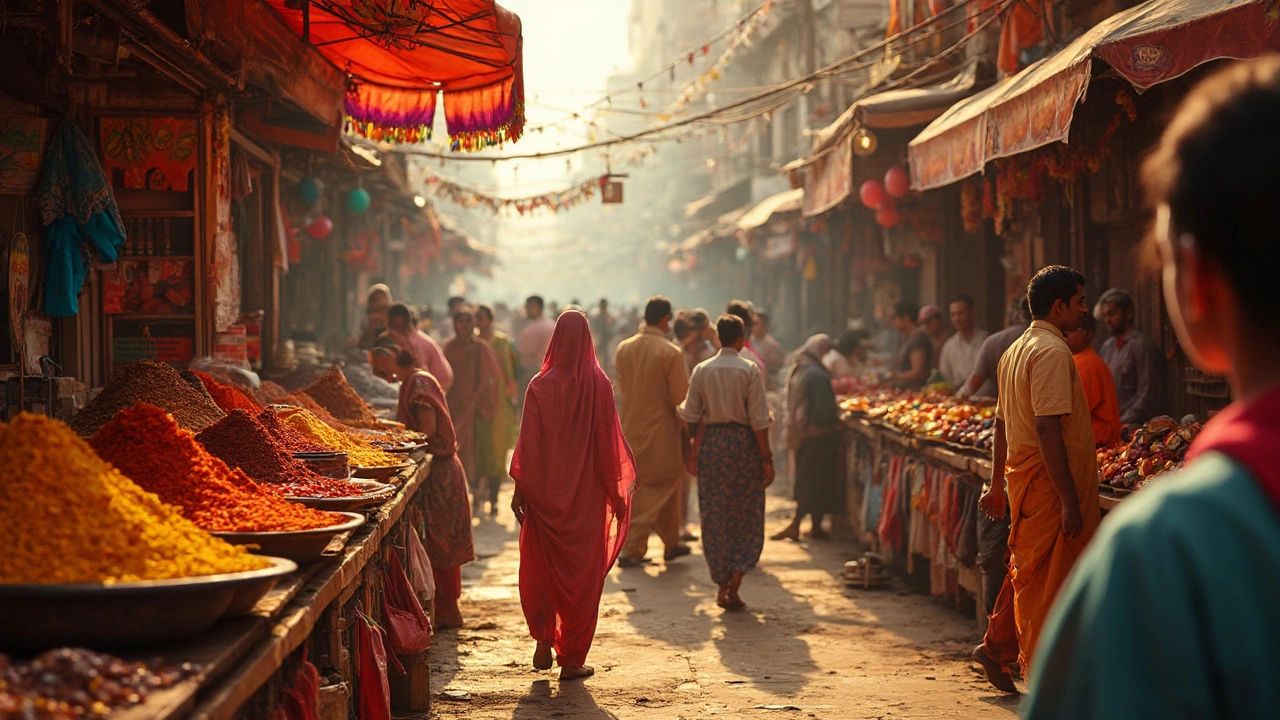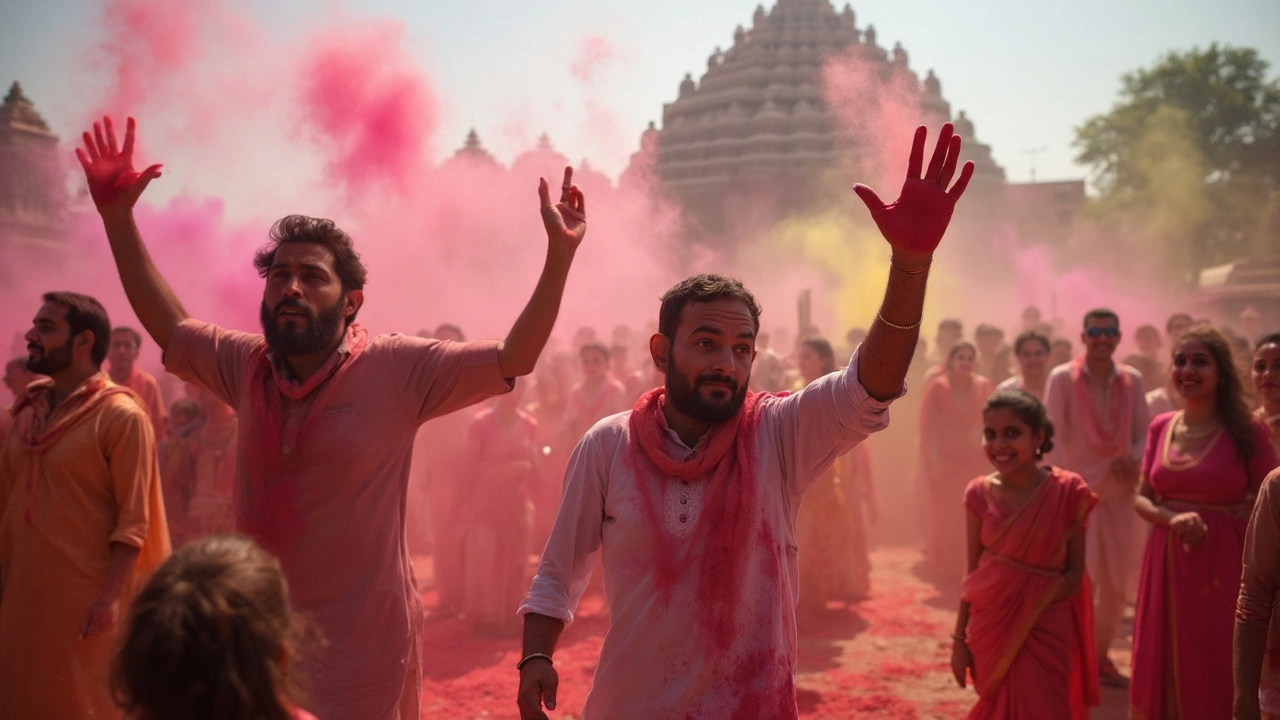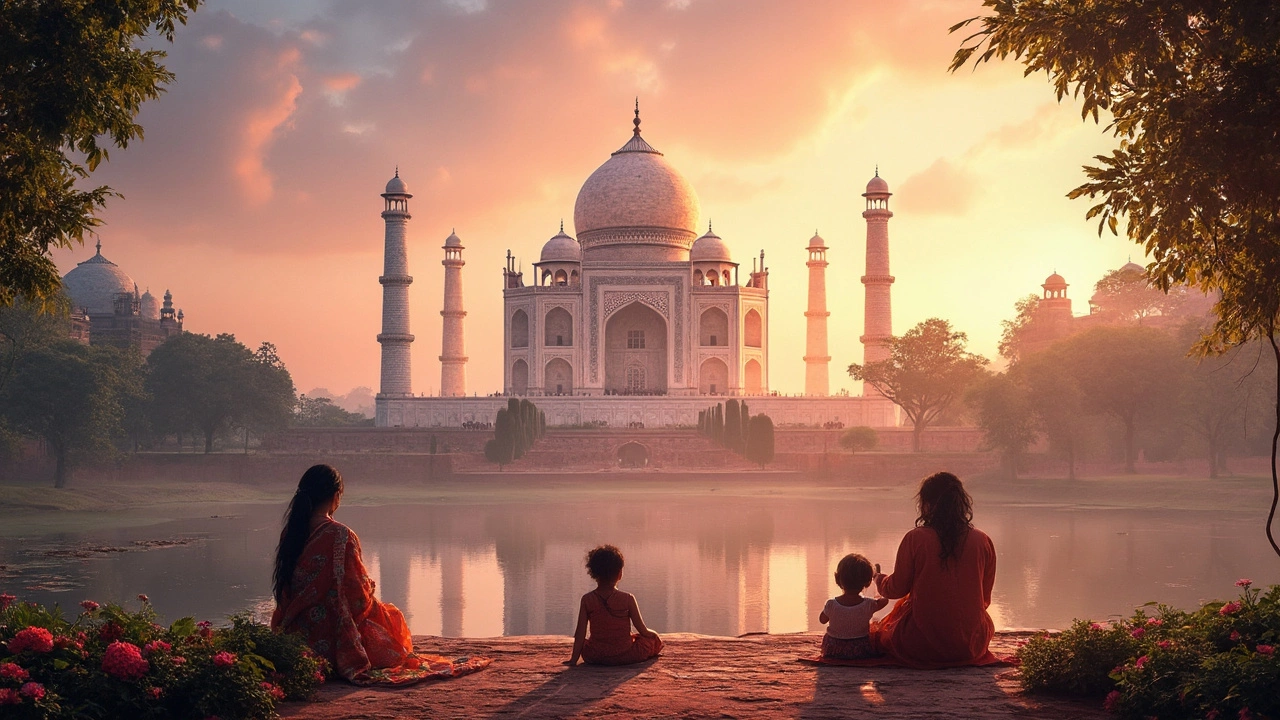What is India Famous For: Food, Culture, Festivals, Landmarks & More
 Jun, 30 2025
Jun, 30 2025
Think about a place where the scent of spices hangs in the air, elephants roam ancient palaces, and the sound of honking rickshaws mingles with temple bells. That’s India, a country so alive with color and chaos that it sticks with you long after you visit. People don’t just wonder what India is famous for—they want to experience it. The real charm is that it’s never just one thing. Let’s break it down and see what makes India stand out across the globe.
The Pulse of Spices: Indian Cuisine on the World Stage
Ever wondered why Indian food is almost everywhere, from New York food trucks to tiny Baltimore takeouts? It’s because the food is an adventure in itself. The country tugs at your taste buds like nowhere else, with vibrant curries, crispy samosas, and bread that comes in a hundred varieties—naan, roti, paratha, to name a few. Do you know butter chicken, that creamy, tangy dish everyone orders, was first created in Delhi in the 1940s by accident, mixing leftovers with tomato gravy?
Spices are India’s secret handshake with the world. Think turmeric, cardamom, cumin—these flavors aren’t just for heat; they shape every meal’s personality. The legendary spice trade with the Romans and Arabs? That began in India, back when boats were built by hand and navigated by the stars. Today, India is still the world's largest producer, consumer, and exporter of spices. If you peek into an Indian kitchen, chances are there’s a tin of garam masala passed down through generations. Here’s a cool fact: India grows more than 70% of the world’s spices.
But it’s not all fire and five-alarm heat. Southern India loves its tangy sambar and coconut-heavy dosas, while the North hoards creamy paneers. Street food deserves its own fan club: Mumbai’s vada pav, Delhi’s chaat, and Kolkata’s kathi rolls are basically edible history lessons for less than a dollar. There’s something for every diet. Vegetarians, rejoice—India has the world’s largest number of vegetarians, and there are entire cookbooks dedicated to meat-free feasts.
| Top Exported Indian Spices (2024) | Key Importing Countries |
|---|---|
| Chili | USA, China, Vietnam |
| Turmeric | Bangladesh, Iran, UAE |
| Cumin | USA, UAE, Morocco |
Tip: If you’re traveling and worried about heat, say “mild” when ordering. Even then, expect bold flavors. And don’t skip the desserts: sweet gulab jamun, sticky jalebi, and mango lassi will convert any skeptic.
India’s Cultural Tapestry: From Ancient Roots to Modern Buzz
Pick any Indian city, and you’ll crash into stories centuries old. India’s culture is built like a quilt: layer after layer, thread after thread. This is the land of the Vedas (texts older than Homer), classical arts, Bollywood blockbusters, and a staggering 22 official languages (with over 1,600 dialects if you’re counting). The sheer diversity is wild—it’s like walking through different countries within one border.
Art is everywhere. It’s in the hands of the woman shaping clay lamps for Diwali; in the meticulous moves of a Bharatanatyam dancer in Chennai; in Bollywood song-and-dance routines that end up as memes on TikTok. Indian classical music dates back 2,000 years, and the sound of a sitar is instantly recognizable wherever you are on earth. Did you know yoga, now a global wellness trend, started in India over 5,000 years ago? June 21 was even declared International Yoga Day by the United Nations—credit goes to India for that.
Indian philosophy, spirituality, and the concept of “jugaad” (creative problem solving) have shaped both daily life and business. Major world religions—Hinduism, Buddhism, Jainism, and Sikhism—all trace their roots to Indian soil. And even though you’ll spot plenty of tech startups today, ancient Indian mathematicians like Aryabhata calculated pi and invented the concept of zero long before calculators were cool.
Tip: Even if you’re not spiritual, a visit to an Indian temple, mosque, or church can be eye-opening. Observe, don’t gawk. Say “namaste”—it works everywhere and beats a handshake.

Epic Festivals: When India Turns into One Big Playground
Festivals in India aren’t just events—they’re giant explosions of laughter, color, sound, and food. If you’ve ever seen photos of people throwing colored powder on each other, that’s Holi, the “Festival of Colors.” It’s a burst of joy marking the end of winter and forgiveness—a messy, playful way to start fresh.
Diwali, the “Festival of Lights,” might be why your Indian neighbors are stringing fairy lights in October or November. Every home glows with diyas (oil lamps), sweets pile up on tables, and firecrackers go off despite official bans. Eid is celebrated with rich biryanis and prayers. Christmas and New Year? Not just for Christians—Indians will celebrate anything that calls for cake.
Fun fact: The Kumbh Mela, held every twelve years at four different river-side towns, is the largest peaceful gathering in the world. In 2013, it drew over 30 million people on just one day. Got FOMO yet?
- Holi (March): Playful, loud, riotous—get your old clothes ready.
- Diwali (October/November): The best time to eat sweets and see fireworks.
- Eid (Varies): Savory feasts and new clothes.
- Navratri (September/October): Nine nights of dancing and worship.
- Kumbh Mela (Every 12 years): Spiritual spectacle like you’ve never seen.
Tip: If you’re in India during a festival, join in—but ask locals about customs first. Participation is usually welcome, judgment is not. And yeah, keep earplugs handy. Firecrackers here aren’t for the fainthearted.
Landmarks and Natural Wonders: Icons That Define India
India’s landscapes are just as dramatic as its street food. There’s the obvious showstopper—the Taj Mahal, shimmering as the sun rises over Agra. Over 7 million visitors come each year just for that one marble mausoleum built by a grieving emperor for his wife. But that’s only the beginning. The palaces of Rajasthan look like movie sets, with pink cities (Jaipur), blue cities (Jodhpur), and golden forts (Jaisalmer) straight out of Arabian Nights.
Head south, and you’ll hit Kerala’s dreamy backwaters—lush canals where houseboats float past rice paddies and coconut trees. The Himalayas tower over the north, offering treks, Tibetan monasteries, and frozen rivers for the bold. India’s beaches stretch from the party scene in Goa to quiet, fishing villages on the east coast.
Here’s something few know: India has the world’s tallest statue. The Statue of Unity stands at 182 meters—that’s twice as tall as the Statue of Liberty. Launched in 2018, it draws nearly 30,000 visitors every day.
| Famous Indian Landmarks | Year Built/Opened | Annual Visitors (approx.) |
|---|---|---|
| Taj Mahal | 1632–1653 | 7 million |
| Qutub Minar | 1193 | 3 million |
| Golden Temple | 1581 | 30 million |
| Statue of Unity | 2018 | 10 million |
Tip: Beat tourist crowds by visiting major landmarks before 8 am—even the pigeons are still waking up. And if you’re a hiker, try trekking in Himachal Pradesh or Sikkim. You’ll have Instagram gold with half the people.

Traditions, Crafts, and the Everyday Magic of Indian Life
What is India very famous for if not its traditions passed on quietly in every family, every tiny village, every massive city? Watch an old potter in Rajasthan shape terracotta with his bare hands and you’ll know why Indian crafts are prized worldwide. You’ll spot women in silk saris hand-painting Rangoli patterns (those intricate colored designs on the ground), goldsmiths melting precious metals for elaborate jewelry, and artists weaving carpets that take months to finish.
Ayurveda—the traditional Indian system of medicine—has been dishing out herbal remedies for thousands of years. Modern spas everywhere now tout these oils and treatments, but nothing beats hearing a recipe for homemade turmeric milk from a grandma in Delhi. And yoga isn’t just about stretching—it’s a philosophy for many. Every sunrise, you’ll see groups in parks meditating, chanting, bending into poses. The country pulses with ritual: touching elders’ feet for blessings, tying rakhi during Raksha Bandhan, putting garlands on visitors’ necks as a welcome.
And look, it’s not stuck in the past. Indian weddings, already famous for their extravagance, are now multiday festivals of fashion and dance. Cricket? The country is obsessed, with matches sometimes pulling more viewers than the Super Bowl. Even technology is transforming tradition: artisans sell their wares on Instagram, remote villages get solar power, and young creators remix ancient folklore for YouTube and Netflix. India’s tradition is living and breathing, as adaptable as it is old.
Tip: Want to buy souvenirs? Go for handloom textiles, block-printed fabrics, brass figurines, or handmade soaps. And when bargaining, do it with humor—never anger. Sellers respect a clever negotiator who’s still kind.
Ask anyone: what is India famous for? You’ll get a rainbow of answers—and probably an invitation to dinner, too. This country has always been about more than just monuments or food or festivals. It’s about how old meets new, how chaos and beauty collide, and how, no matter where you’re from, you leave with stories worth sharing. So whether you’re dreaming of eating street food, witnessing sunrise at the Taj Mahal, or joining a sari-clad wedding party, India’s magic is ready when you are.